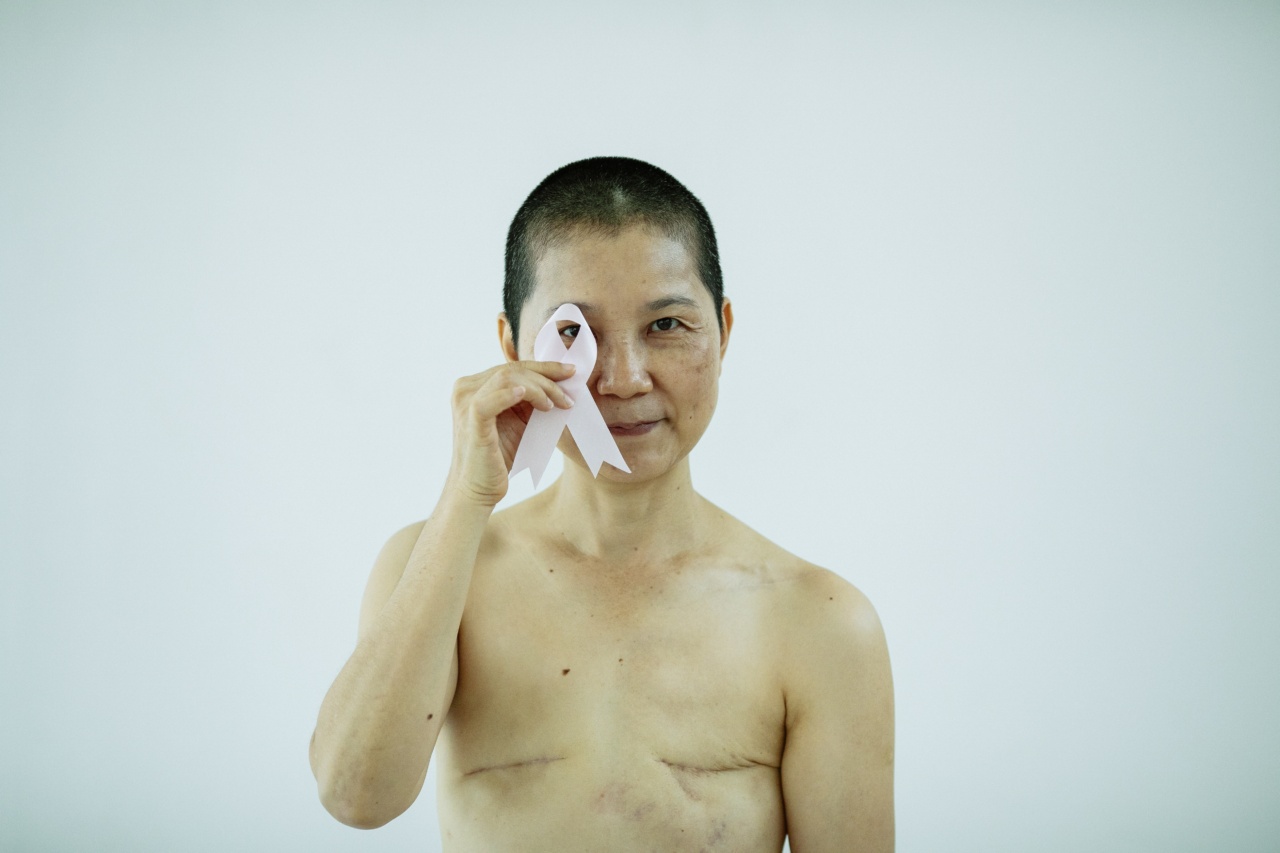Inflammatory breast cancer (IBC) is a rare but aggressive type of breast cancer that occurs when malignant cells block the lymphatic vessels in the skin of the breast.
This causes the breast to appear red, swollen, and tender, giving it the appearance of inflammation, hence the name “inflammatory” breast cancer. Unlike other forms of breast cancer, IBC does not usually present with a lump or mass. Instead, it has specific symptoms that women should be aware of so that they can seek medical attention promptly.
What are the symptoms of Inflammatory Breast Cancer?
The symptoms of IBC are often mistaken for an infection, skin rash, or other less serious conditions.
However, when they don’t respond to usual treatments, such as antibiotics or anti-inflammatory medications, it’s important to see a doctor for further evaluation. Here are some of the most common symptoms of IBC:.
1. Redness and warmth in the breast
One of the earliest and most noticeable symptoms of IBC is redness and warmth in the breast. The breast may look like it’s sunburned or have a reddish or pinkish hue.
The warmth is due to increased blood flow to the area, as a result of malignant cells blocking the lymphatic vessels. This symptom is often accompanied by tenderness and pain.
2. Swelling and thickness of the breast
Another symptom of IBC is swelling and thickness of the breast. The breast may feel heavier or fuller than usual, and the skin may appear to be stretched tight.
This is due to the accumulation of fluids in the breast tissue, which occurs as a result of the cancerous cells blocking the lymph vessels.
3. Changes in the texture of the breast skin
IBC can cause the skin of the breast to change texture and become dimpled, pitted, or ridged, similar in appearance to orange peel. This is caused by the infiltration of malignant cells in the skin tissue, which can affect the elasticity of the skin.
Other changes in texture may include thickening or hardening of the skin, or the appearance of small bumps or nodules.
4. Itching and tenderness in the breast and nipple
As IBC progresses, women may also experience itching and tenderness of the breast and nipple. This may be associated with a discharge or bleeding from the nipple, which can be a sign of advanced disease.
These symptoms may be accompanied by a feeling of heaviness or pressure in the breast.
5. Enlarged lymph nodes under the arm or near the collarbone
In some cases, IBC can cause the lymph nodes under the arm or near the collarbone to become swollen and firm to the touch. This indicates that the cancer has spread outside the breast and is advancing rapidly.
Women who experience these symptoms should see a doctor immediately.
What are the risk factors for Inflammatory Breast Cancer?
Like other types of breast cancer, IBC is more common in women over the age of 50. However, it can affect women of any age, including younger women. Other risk factors for IBC include:.
- A family history of breast cancer
- Being overweight or obese
- Having dense breast tissue
- Exposure to radiation
- Having a previous diagnosis of breast cancer
- Having hormonal imbalances, such as high estrogen levels
- Having a genetic mutation, such as the BRCA1 or BRCA2 gene mutation
It’s worth noting that IBC is more common in African American women than in women of other races. This may be due to differences in breast tissue, hormonal factors, or other environmental or genetic factors.
How is Inflammatory Breast Cancer diagnosed?
Inflammatory breast cancer is diagnosed through a combination of clinical examination, imaging tests, and biopsy. Women who present with symptoms of IBC will typically have a mammogram or ultrasound to check for any abnormalities in the breast tissue.
However, because IBC does not usually cause a lump or mass, these tests may not show anything suspicious. Instead, doctors may order a breast MRI or a PET scan to look for areas of inflammation in the breast.
If IBC is suspected, a biopsy will be performed to confirm the diagnosis. During a biopsy, a small sample of tissue is taken from the breast and examined under a microscope for the presence of malignant cells.
If cancer is found, the biopsy will also help determine the type of breast cancer and its stage.
How is Inflammatory Breast Cancer treated?
Because IBC is an aggressive form of breast cancer, treatment typically involves a combination of chemotherapy, surgery, and radiation therapy.
Chemotherapy is used first to shrink the tumor and kill any cancer cells that may have spread to other parts of the body. Surgery is then performed to remove as much of the cancerous tissue as possible.
This may involve a mastectomy, which is the removal of the entire breast, or a lumpectomy, which is the removal of the cancerous tissue and a portion of the surrounding healthy tissue.
After surgery, radiation therapy may be used to kill any remaining cancer cells and reduce the risk of recurrence.
In some cases, targeted therapies or hormone therapy may also be used to treat IBC, depending on the type of breast cancer and the patient’s individual situation.
Conclusion
Inflammatory breast cancer is a rare but aggressive form of breast cancer that requires early diagnosis and aggressive treatment.
Women who experience symptoms such as redness, swelling, or thickening of the breast should seek medical attention promptly, especially if these symptoms do not respond to usual treatments. By being aware of the symptoms of IBC and getting regular breast exams, women can increase their chances of catching this disease early and getting the treatment they need to fight it.






















